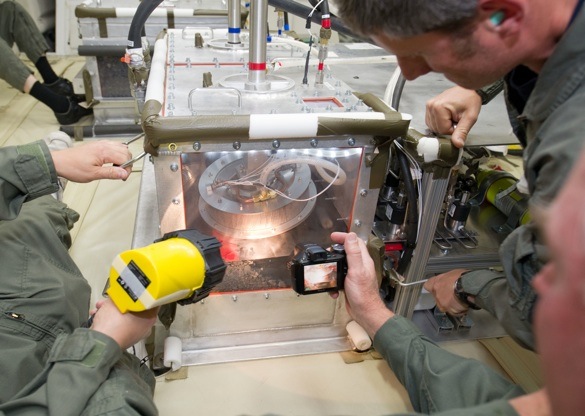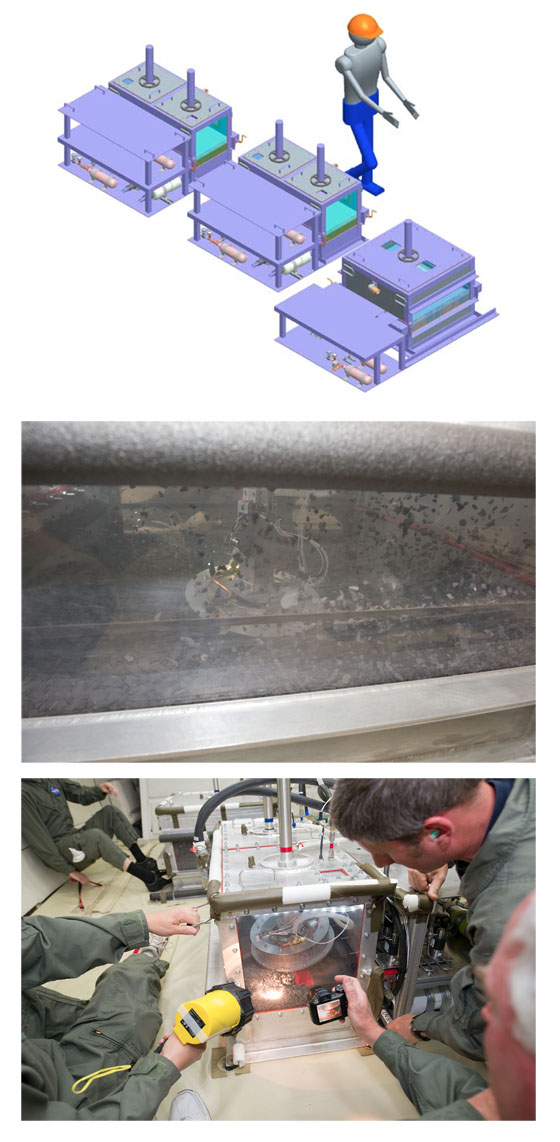Origins - Spectral Interpretation - Resource Identification - Security - Regolith Explorer (OSIRIS-Rex) Low-Gravity Regolith Sampling Tests
PI: Joe Vellinga, Lockheed Martin Inc., Dante Lauretta (Co-I), University of Arizona
PI: Joe Vellinga, Lockheed Martin Inc., Dante Lauretta (Co-I), University of Arizona

- TA07 Human Exploration Destination Systems
In 2007 low-gravity regolith-sampling tests were conducted during two flights, each with four sampler head containers for a total of eight test runs. For these first tests, the sampler head rested on the regolith simulants. A second set of regolith sampling tests (two flights, eight test runs) were performed during the FAST flights in 2009. These tests took the next step in demonstration of the sampling technique: movement of the sampler head from above the regolith to contact the regolith simulant, triggering sampling with contact and compression of the telescoping arm. During these tests it was learned that negative g can levitate regolith into the sampler head; the sample head needs to be isolated from the regolith simulant except during the test run while the g-level is low but not negative.
Extensive ground testing and two previous reduced gravity flights have demonstrated the viability of the regolith sampling system. Test series demonstrate sample acquisition in the relevant low-g environment to contribute to achieving TRL-6 prior to the OSIRIS-REx Preliminary Design Review (PDR) in the first quarter of 2013.
Besides OSIRIS-REx, these tests will also benefit any other asteroid or comet nucleus sample acquisition mission in the future by demonstrating the effectiveness of the regolith gas fluidization sampling technique. Future commercial asteroid resource acquisition activities will benefit from the knowledge gained from the demonstration of regolith acquisition and recovery to the spacecraft.
For this third series of tests new test chambers have been designed and built that isolate the sampler head from the regolith until the test is conducted and isolates it again after the test run. The sampler heads and short test arms are the same as used in the 2009 tests. There are five test chambers (see below), two each in two of the fixtures and one large test chamber. The large chamber tests the case where regolith on a small body with micro-g gravity levels might push aside from the sampling head. The gas control packages are separate for ease of handling and hooked up after loading onto the A/C. The chambers have filtered vent lines to attach to the A/C vent.

Technology Details
-
Selection DateAFO3 (Mar 2012)
-
Program StatusCompleted
- 1 Parabolic
Development Team
-
PIJoe Vellinga
-
PI Organization
-
Co-IDante Lauretta
-
Co-I Organization
-
SponsorNASA
-
PartnersUniversity of Arizona
NASA/Goddard Space Flight Center -
More Information

